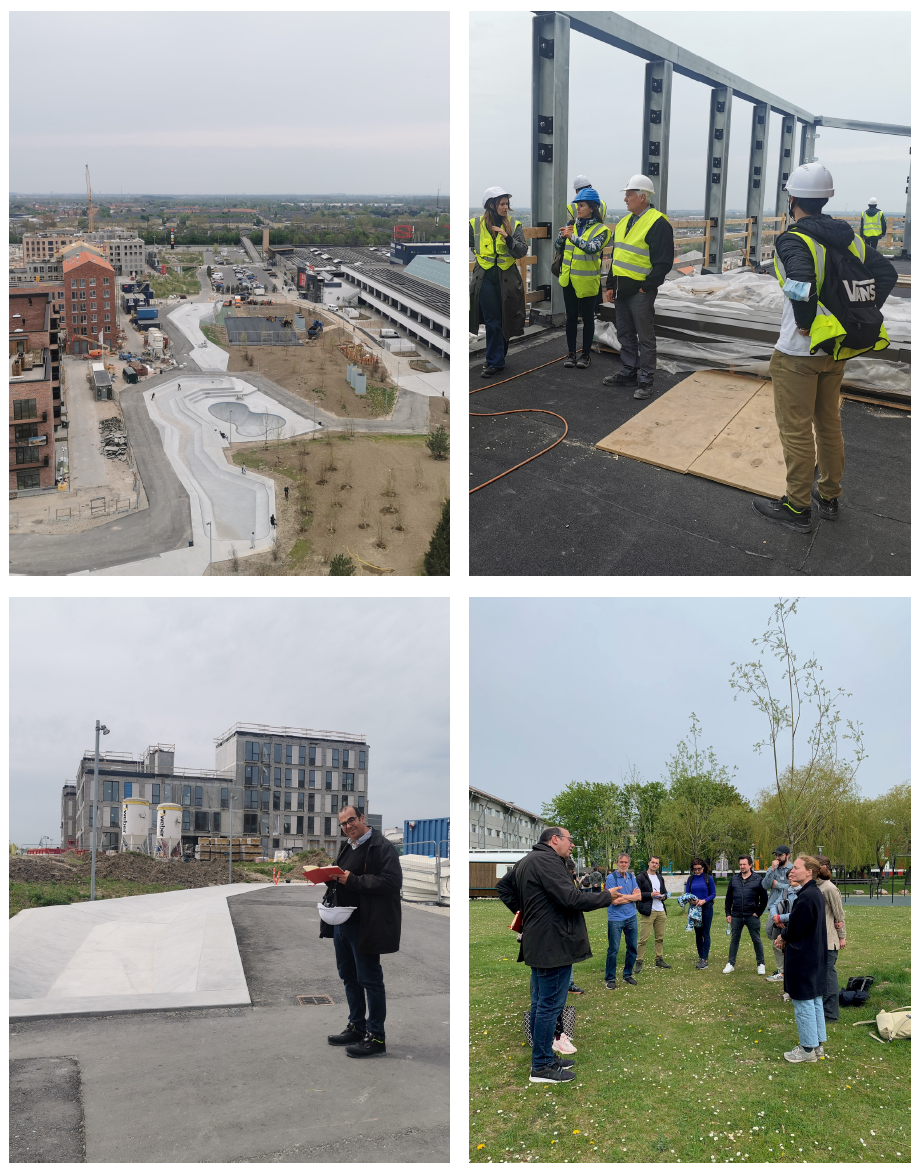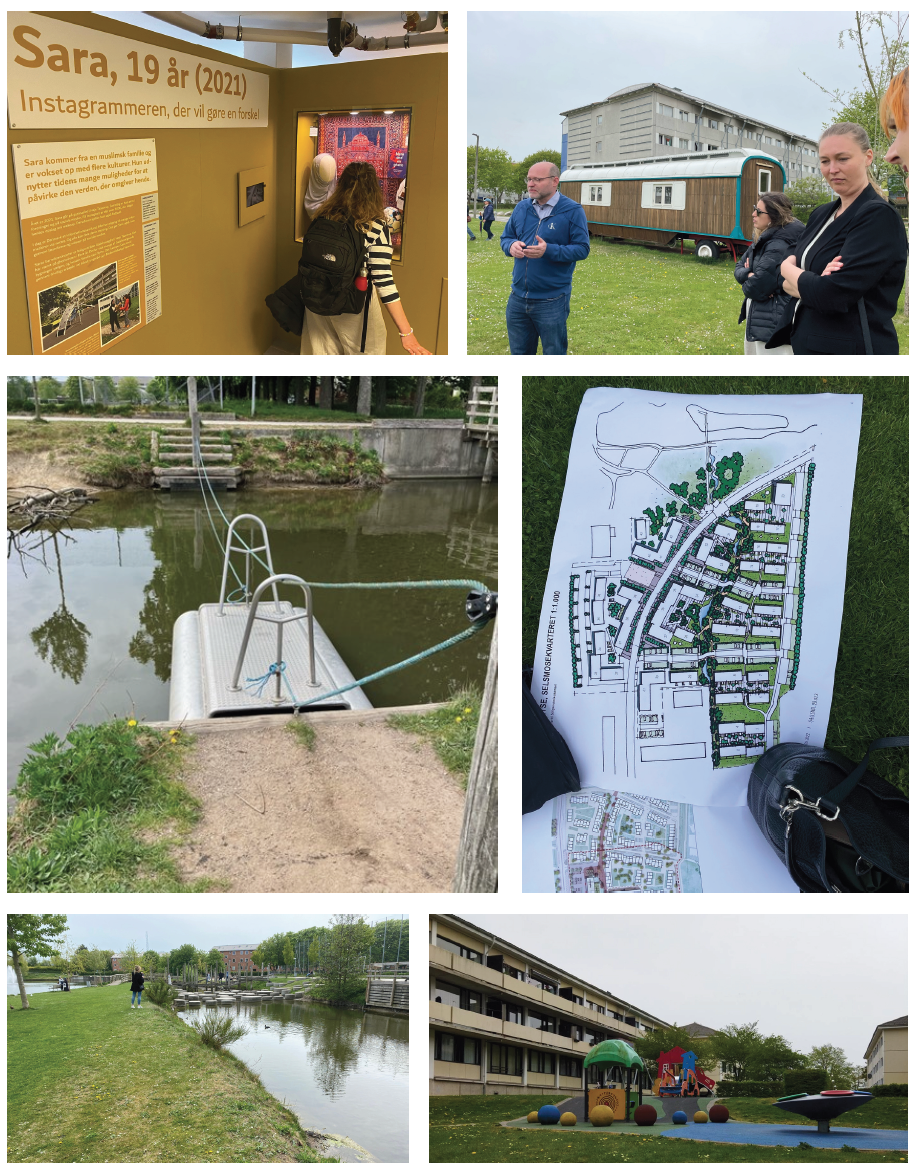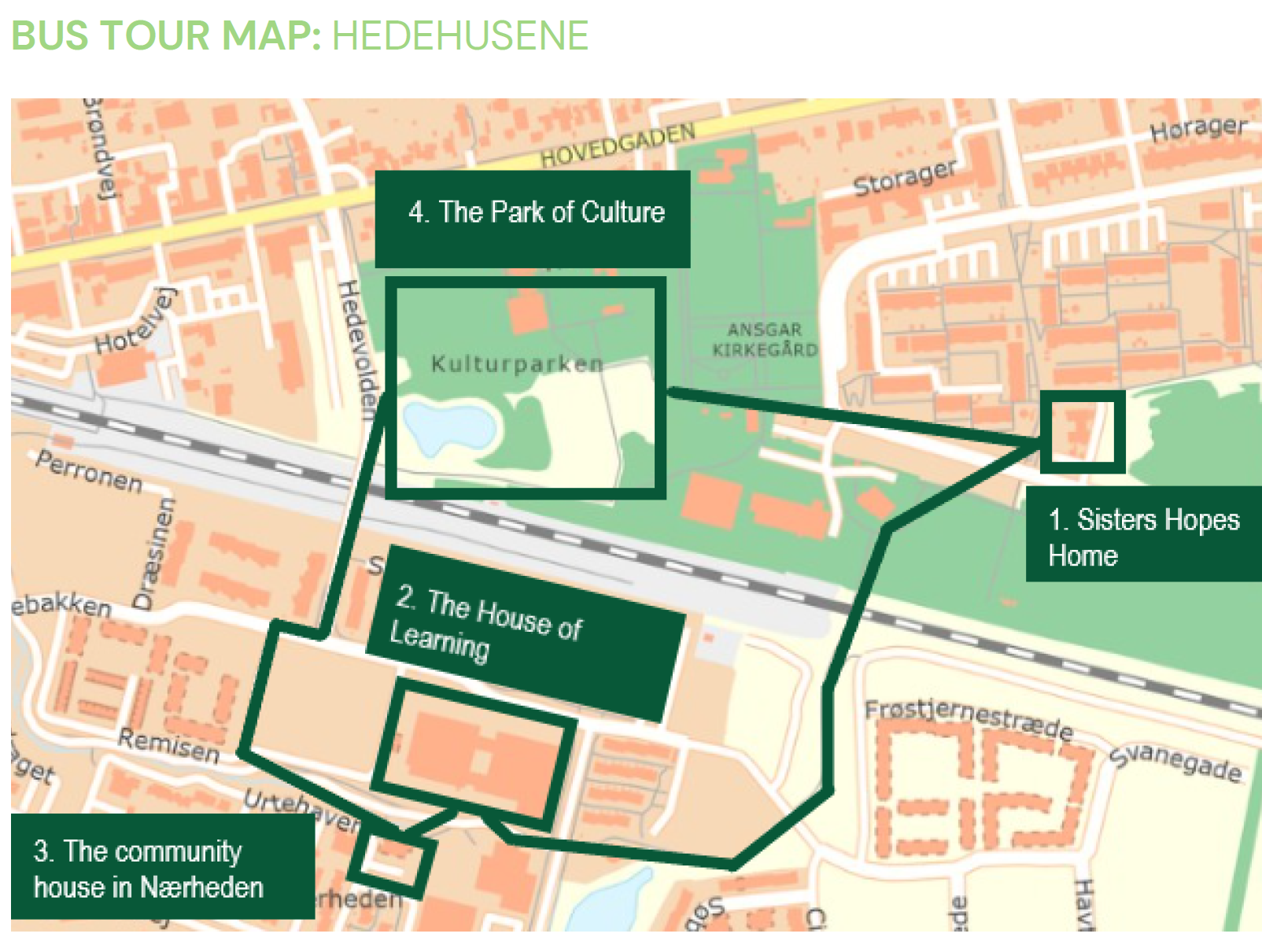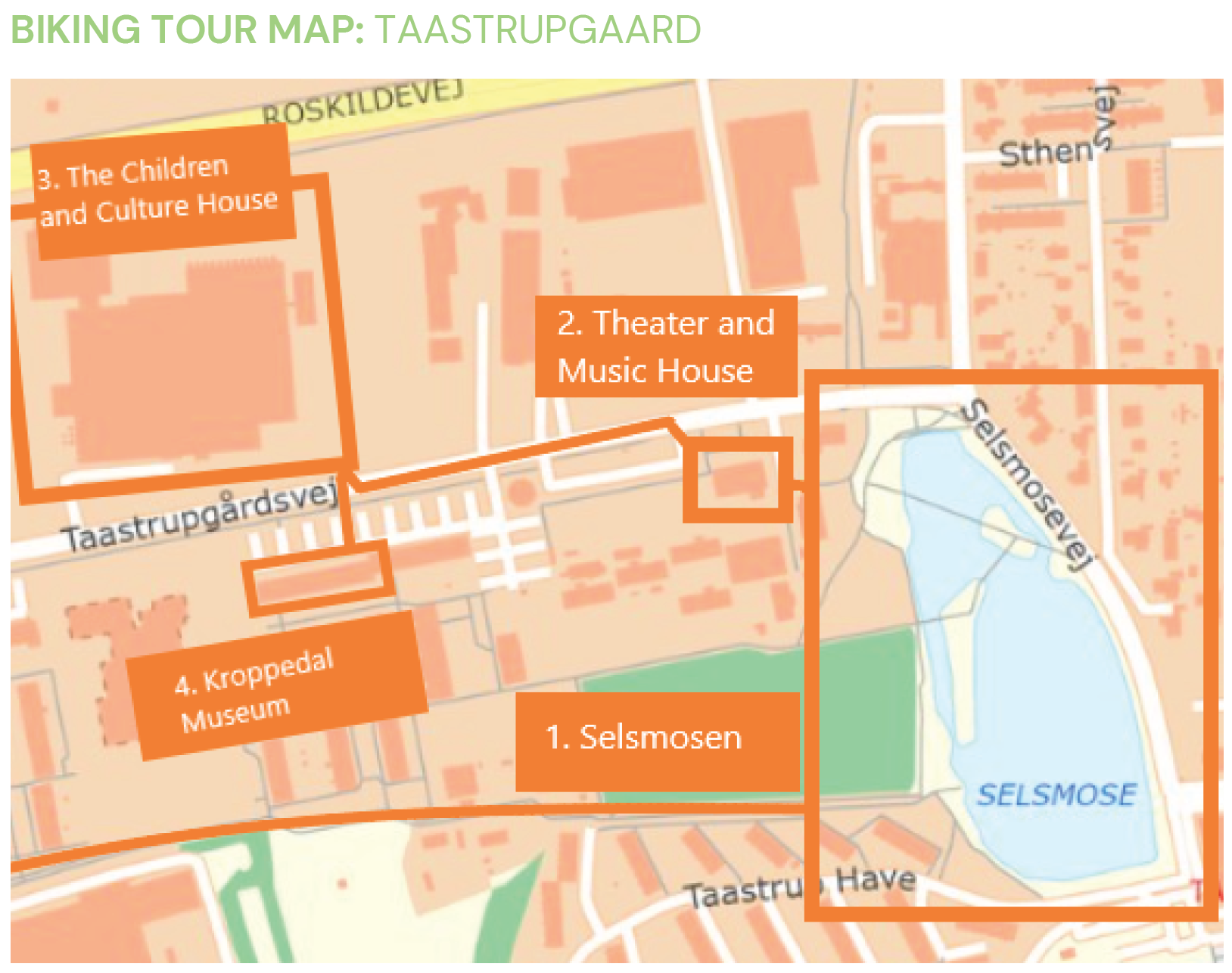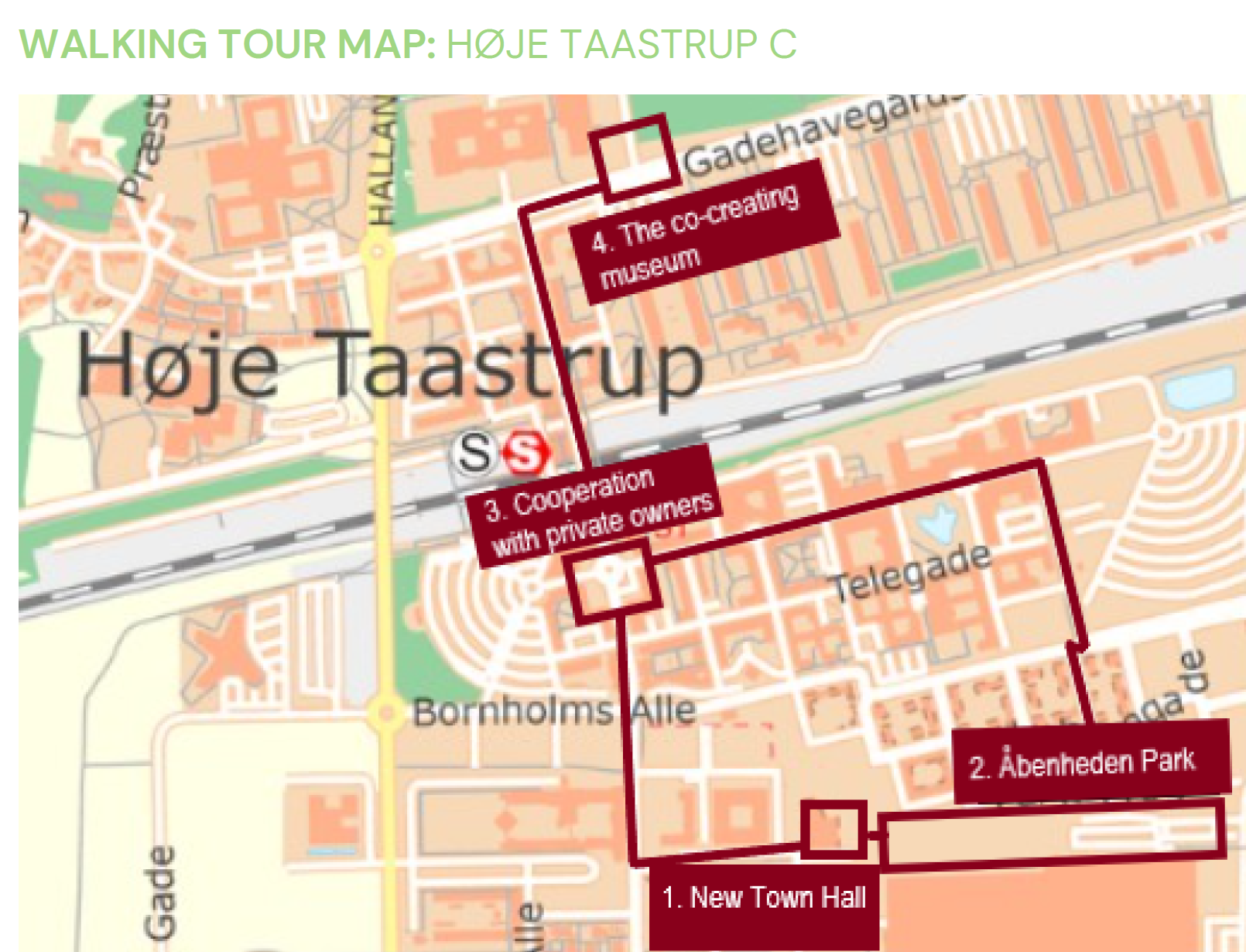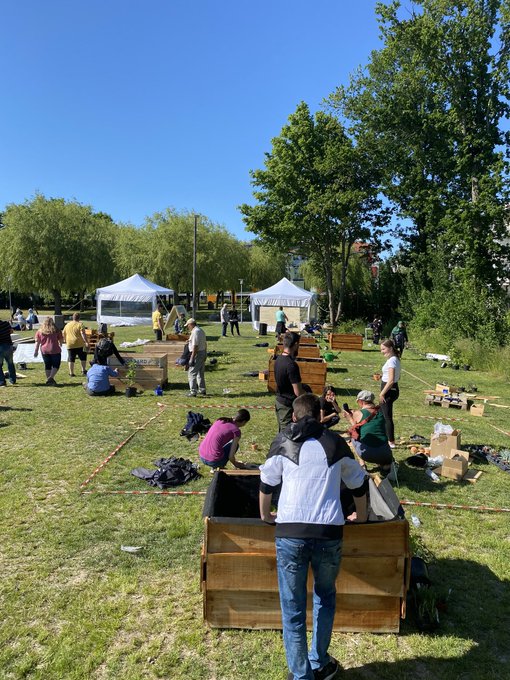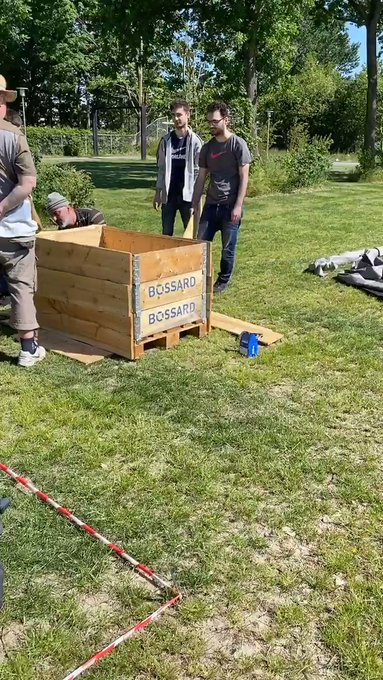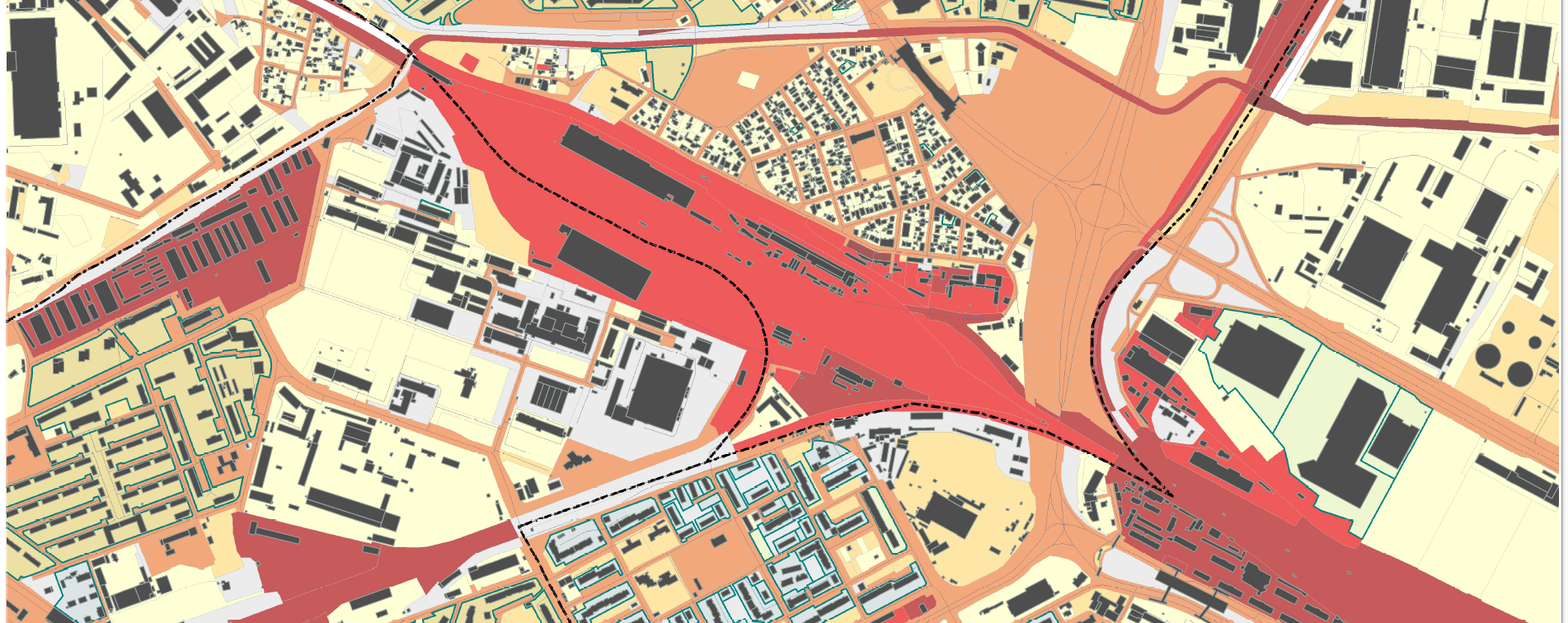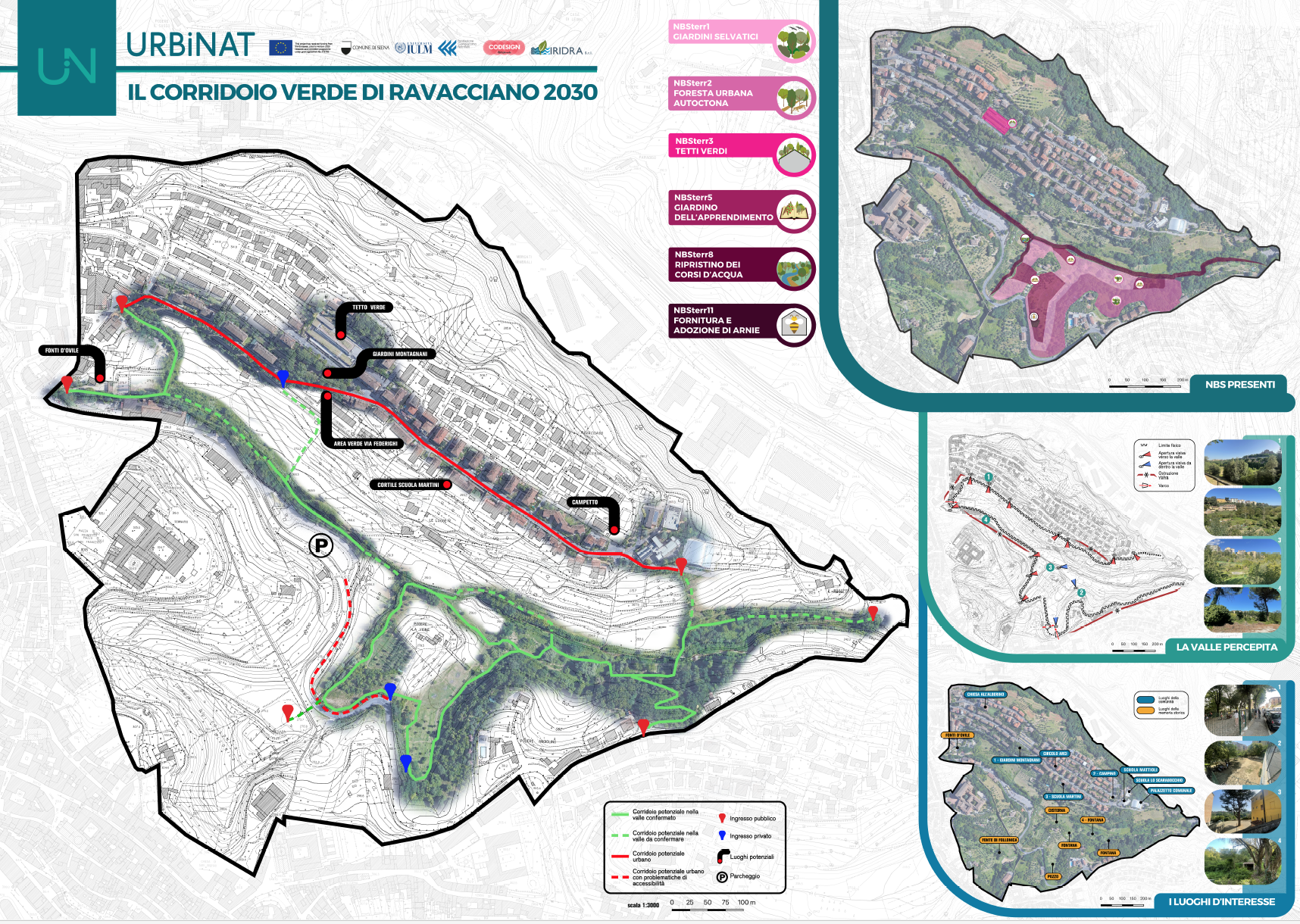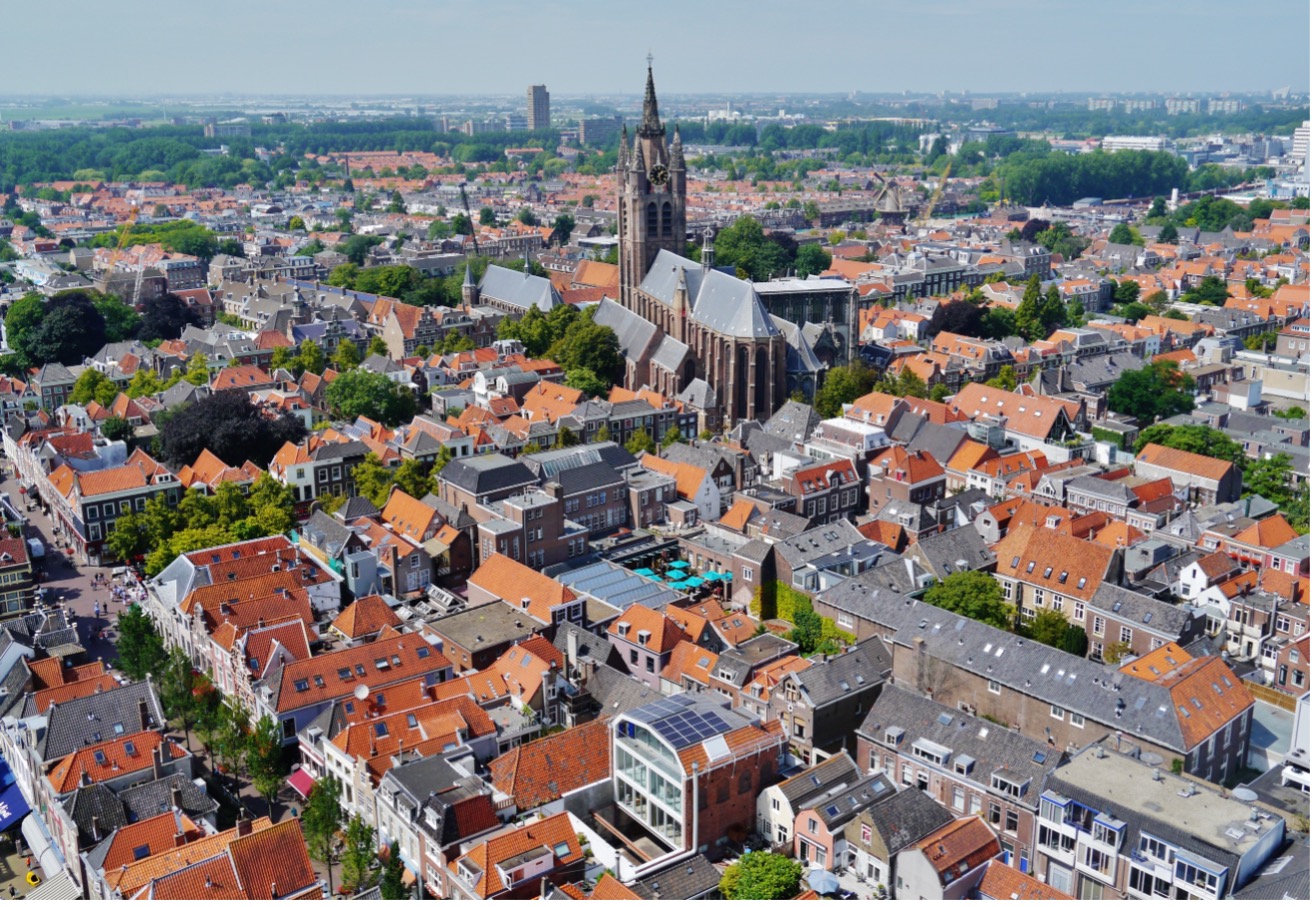

HØJE-TAASTRUP, Denmark
Høje-Taastrup, Danmark
--- Høje-Taastrup Meeting Booklet ---
--- Høje-Taastrup-mødehæftet ---
URBiNAT Follower City Høje-Taastrup hosted the Consortium Meeting held on 9-11 May. This was a great opportunity to share experiences and to explore local developments. Download the Høje-Taastrup Meeting Booklet HERE
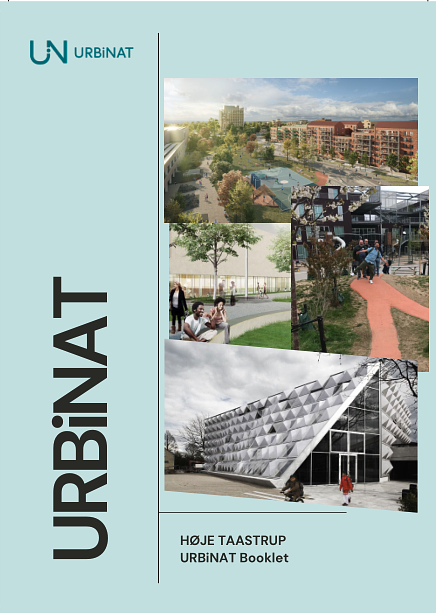
URBiNAT Follower City Høje-Taastrup var vært for konsortiemødet, der blev afholdt den 9.-11. maj. Det var en god mulighed for at udveksle erfaringer og undersøge den lokale udvikling. Download Høje-Taastrup-mødehæftet HER

Høje Taastrup: URBiNAT Follower City
Høje Taastrup: URBiNAT Follower City
Høje-Taastrup is a municipality situated on the western outskirts of Greater Copenhagen. It has around 50.000 inhabitants and has multiple centers spread along the main railway line connecting Copenhagen with the rest of Denmark. Modern day Høje-Taastrup came into existence as part of the realization of the 1947 “Finger Plan”, which envisioned railways stretching outwards from central Copenhagen, establishing the current urban sprawl surrounding the capital.
What sets Høje-Taastrup apart from its neighbors is that it was designed to be the region’s main transportation hub in the 1950’s. Over a short period of time, the once rural municipality became a focal point for modernist urban planning. Today, 26 % of the population lives in social housing, and 13 % in severely deprived neighborhoods. Focusing on the creation of a more balanced city, the municipality is currently developing the severely deprived neighborhoods under a common plan with the goal of breaking down the social and physical barriers that isolate them from the surrounding city.
Høje-Taastrup er en kommune beliggende i den vestlige udkant af Storkøbenhavn. Det har omkring 50.000 indbyggere og har flere centre spredt langs hovedbanelinjen, der forbinder København med resten af Danmark. Den moderne Høje-Taastrup kom til som en del af realiseringen af ”Finger Plan” fra 1947, som forestillede jernbaner, der strækker sig udad fra det centrale København, og etablerede den nuværende byspredning omkring hovedstaden.
Det, der adskiller Høje-Taastrup fra sine naboer, er, at det var designet til at være regionens vigtigste transportknudepunkt i 1950’erne. I løbet af en kort periode blev den engang landlige kommune et samlingspunkt for modernistisk byplanlægning. I dag bor 26% af befolkningen i sociale boliger, og 13% i stærkt berøvede kvarterer. Med fokus på skabelsen af en mere afbalanceret by udvikler kommunen i øjeblikket de stærkt berøvede kvarterer under en fælles plan med det mål at nedbryde de sociale og fysiske barrierer, der isolerer dem fra den omkringliggende by.
URBiNAT: The Healthy Corridor Story
URBiNAT: Historien om sund korridor
SUBTITLES: Click the CC at the bottom of the Video for subtitles in Bulgarian, Danish, Dutch, English, French, Italian or Portuguese
UNDERTITLER: Klik på CC nederst i videoen for undertekster på bulgarsk, dansk, hollandsk, engelsk, fransk, italiensk eller portugisisk
INTERVENTION AREA: Høje-Taastrup
INTERVENTION AREA: Høje-Taastrup
Interactive Map of the Høje-Taastrup Healthy Corridor
Interaktivt kort over den sunde korridor Høje-Taastrup


This interactive map, powered by GIS technology, allows you to delve into the URBiNAT Healthy Corridor project of Høje-Taastrup. Layers visualize the project’s intervention area, along with the various Nature-Based Solutions (NBS) co-created throughout the initiative. Navigate the map and discover how these NBS elements contribute to a healthier and more sustainable urban environment.
Dette interaktive kort, der er drevet af GIS-teknologi, giver dig mulighed for at dykke ned i URBiNAT Healthy Corridor-projektet i Høje-Taastrup. Lagene visualiserer projektets interventionsområde sammen med de forskellige naturbaserede løsninger (NBS), der er skabt i fællesskab gennem hele initiativet. Naviger på kortet, og opdag, hvordan disse NBS-elementer bidrager til et sundere og mere bæredygtigt bymiljø.
Research and Innovation
Forskning og innovation
As part of the URBiNAT project, scientific partners at the Danish Technological Institute have dedicated significant resources to the development of Nature-Based Solutions. One particular focus has been on sustainable building materials. Teams have focused on the reuse upcycling of construction materials including bricks and concrete. URBiNAT has also supported research and development into the 3D “printing” of concrete.
Download flyer HERE
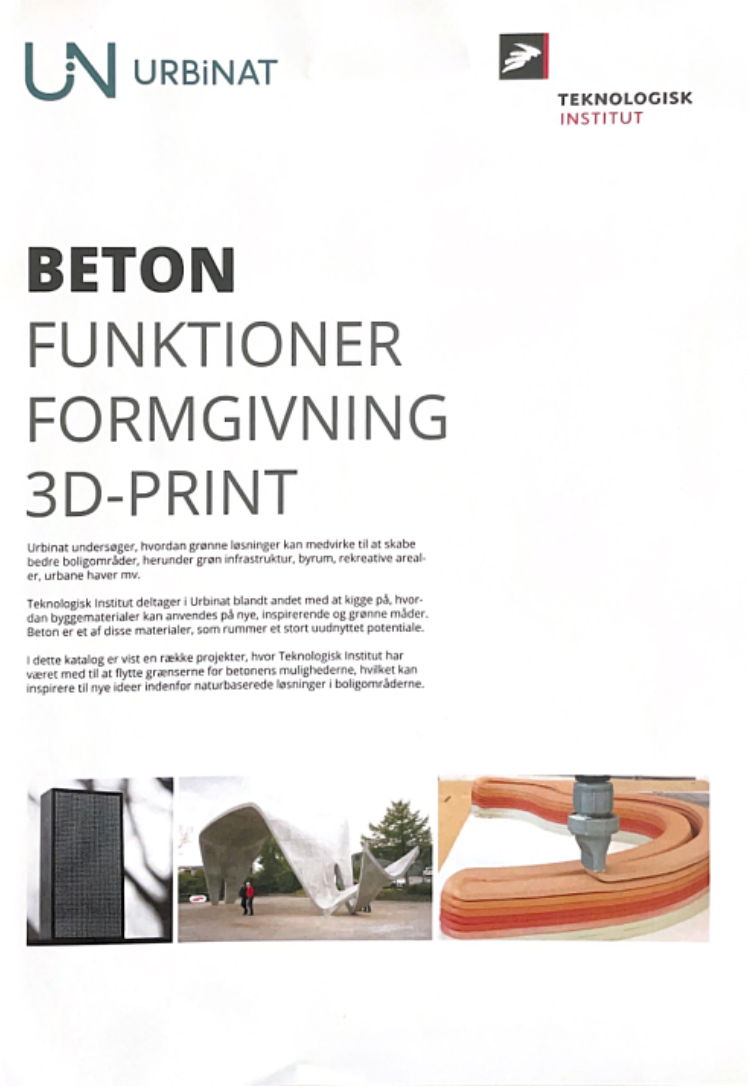
Over three days, from 9 to 11 May 2022, Høje-Taastrup was host to an URBiNAT Consortium meeting + field trip which brought together researchers, planners, architects from across Europe. Highlights from this event, including plans for the co-selection of NBS, and the co-creation of a Healthy Corridor which will weave through the district, are presented in a nicely produced BOOKLET.
Participants were asked to take photos and note down their reflections in terms of challenges, thoughts, and ideas. Therefore, the field trip has resulted in interesting reflections and photo-documentation from the visit for the benefit of the URBINATproject in Høje Taastrup, but also to benefit other urban development projects.
To document this knowledge, The Danish Technological Institute (DTI) and Høje-Taastrup Municipality produced this booklet to show the results and communicate the ideas to colleagues within URBiNAT and other interested parties. The booklet is intended to stimulate further discussion on the future of co-creation of nature-based solutions.
Som en del af URBiNAT-projektet har de videnskabelige partnere på Teknologisk Institut afsat betydelige ressourcer til udvikling af naturbaserede løsninger. Et særligt fokus har været på bæredygtige byggematerialer. Hold har fokuseret på genbrug og upcycling af byggematerialer, herunder mursten og beton. URBiNAT har også støttet forskning og udvikling inden for 3D-“printning” af beton.
Download brochuren HER

I løbet af tre dage, fra den 9. til 11. maj 2022, var Høje-Taastrup vært for et URBiNAT-konsortiemøde + ekskursion, som samlede forskere, planlæggere og arkitekter fra hele Europa. Højdepunkterne fra dette arrangement, herunder planerne for fælles udvælgelse af NBS og fælles skabelse af en sund korridor, der skal væve sig gennem bydelen, præsenteres i en flot produceret BOOKLET.
Deltagerne blev bedt om at tage billeder og notere deres refleksioner i form af udfordringer, tanker og idéer. Derfor har ekskursionen resulteret i interessante refleksioner og fotodokumentation fra besøget til gavn for URBINATprojektet i Høje Taastrup, men også til gavn for andre byudviklingsprojekter.

